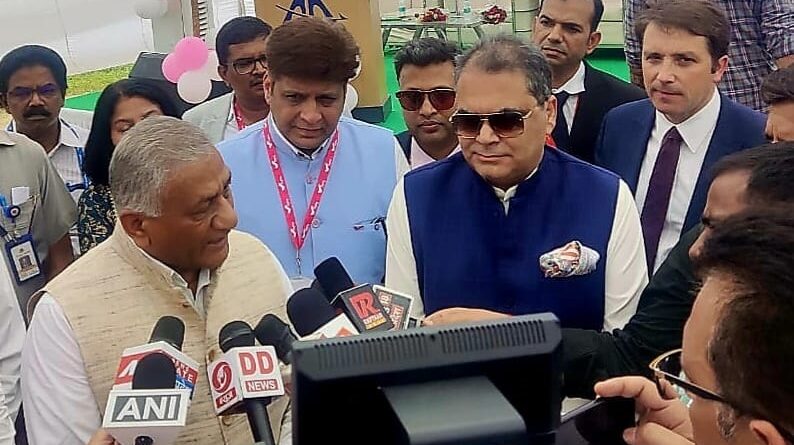MP Arora: Airports to adopt latest technology for faster screening of hand baggage and passengers

Bureau of Civil Aviation Security (BCAS), aviation security regulator in the country, has issued AvSec Circular providing minimum specifications for Pre- Embarkation Security Check-point X-ray baggage scanners based on Computed Tomography technology. This would result in faster screening of hand baggage of passengers without removing electronic devices.
This has been stated by Minister of State for Civil Aviation Gen (Dr) VK Singh (Retd) in reply to a question on installation of security scanners at airports asked by MP (Rajya Sabha) from Ludhiana Sanjeev Arora in the recently concluded winter session of Rajya Sabha. It may be mentioned here that the main reason you have to remove your laptop from your bag is because its battery and other mechanical components are too dense for X-rays to penetrate effectively – especially if the scanning system is old. The same goes for power cords and other devices such as tablets and cameras. With these items in your bag, security officials cannot use the screened image to determine whether a risk is present. They will have to flag the bag for a physical search, which slows everything down. It is easier if all devices are removed in the first place. Some airports have upgraded 3D scanning that allows travelers to pass their bags through security without having to remove their laptops. If you are not asked to take out your laptop, it is probably because one of these more expensive systems is being used.
Arora had asked about the steps the government is taking to install the baggage scanners with latest technology for screening of electronic devices such as laptops, tablets, and digital cameras in their hand luggage while going through security checkpoints so that these things are not required to be taken out during carryon baggage scanning. Arora had also asked whether the government is also planning to install all-body scanners and high-end X-ray machines at airports, if so, details thereof. It may be mentioned here that a full-body scanner is a device that detects objects on or inside a person’s body for security screening purposes, without physically removing clothes or making physical contact. Unlike metal detectors, full-body scanners can detect non-metal objects, which became an increasing concern after various airliner bombing attempts in the 2000s. Some scanners can also detect swallowed items or hidden in body cavities of a person. Starting in 2007, full-body scanners started supplementing metal detectors at airports and train stations in many countries.
Further answering to the Arora’s question whether the government is also planning to install all-body scanners and high-end X-ray machines at airports, the Minister mentioned in his reply that “yes,” BCAS has issued directions for installation of full body scanners at all airports in the country in a phased manner with all hyper-sensitive and sensitive airports to be covered on priority basis. BCAS has also issued directions that all existing single view x-ray machines installed at different screening points at all civil airports in the country are to be replaced with dual view x-ray machines in a phased manner.

